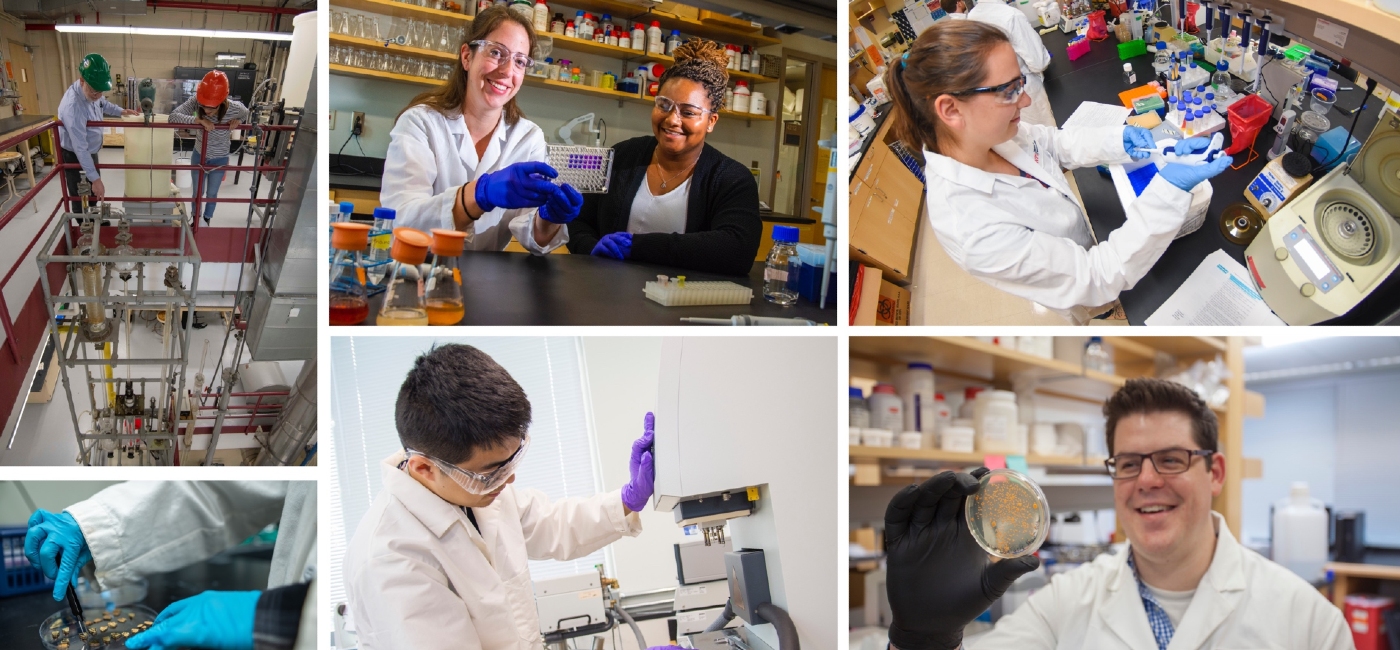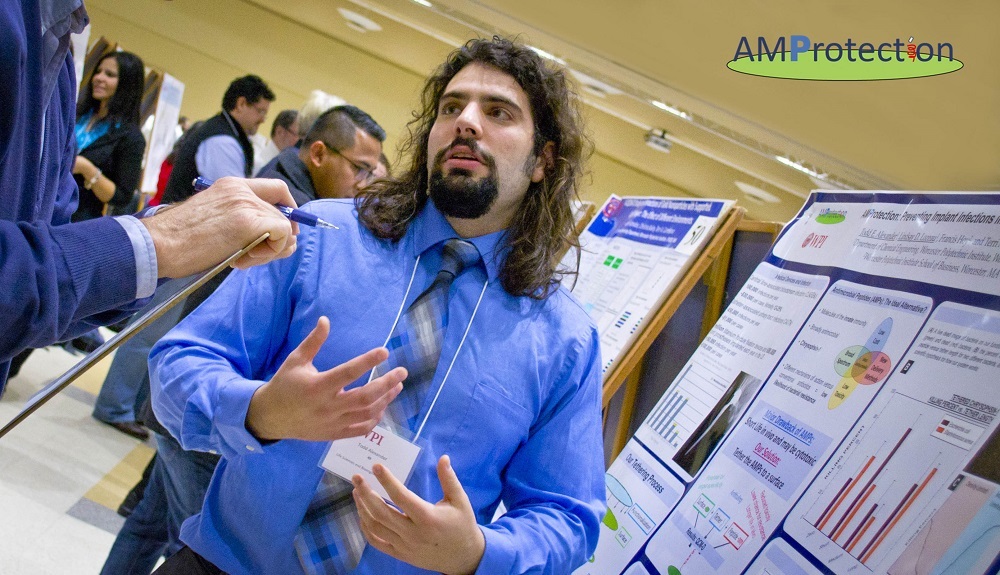A novel technology developed at Worcester Polytechnic Institute (WPI) to block human infections by taking a lesson from fish has landed a $50,000 grant from the National Science Foundation’s Innovation Corps (I-Corps) program.
The WPI team is engineering surfaces with molecules called antimicrobial peptides (AMPs), several of which have been extracted from fish gills where they serve as the first line of defense against waterborne bacteria and other pathogens. I-Corps grants are competitive awards for technologies developed by earlier rounds of NSF funding that may be ready to advance from an academic lab to commercial production.
“Millions of people in the United States are treated each year with catheters, orthopedic implants, and similar invasive medical devices that carry the risk of serious implant-related infections,” said Todd Alexander, a doctoral student at WPI and the NSF designated “entrepreneurial lead” for the I-Corps project. “We’re trying to help prevent those cases by creating new surfaces for implants and devices that block infections.”
As fish filter water through their gills to breathe, the AMPs trap and kill pathogens before they can invade the bloodstream. In earlier work, the WPI team attached fish AMPs to silicon and gold surfaces and found the bound peptides were able to kill 82 percent of E. coli bacteria exposed to them in culture. Those findings were reported in the paper “Creating Antibacterial Surfaces with the Peptide Chrysophsin-1” published in 2012 by the journal ACS Applied Materials & Interfaces.
Since then the team has continued to refine the technology and is now seeking to commercialize a process for coating the surfaces of medical devices with AMPs to prevent bacteria and other pathogens from adhering to those surfaces and ultimately causing an infection.
“We are very pleased the National Science Foundation sees the potential of our work to be translated in ways that may help people avoid serious infections,” said Terri Camesano, PhD, professor of chemical engineering and assistant dean of engineering, who is the principal investigator of the I-Corps grant and the leader of the associated AMP research program. “This will be an intensive, fast-moving process, and it fits well with the entrepreneurial focus we bring to our lab.”
Teams selected for the I-Corps program participate in national business development workshops, then get into the field to speak with a minimum of 100 potential customers and partners to evaluate the real-world potential of their technology. Throughout the process, they use the Business Model Canvas, a popular entrepreneurial tool, to refine the business model for their technology.
“This is an excellent program, because it takes the graduate students out of the lab and into the marketplace,” said Frank Hoy, PhD, Paul R. Beswick Professor of Innovation and Entrepreneurship in WPI's School of Business, who is advising on the I-Corps project as the NSF designated mentor for the group. “The key benefit is to get graduate students and research leaders to think about how their work in the lab could meet the needs of real customers, with an understanding of the elements required for a profitable business case.”
The WPI team is one of 24 selected from universities around the country to participate in the current round of I-Corps grants. As the entrepreneurial lead, Alexander is talking with medical device manufacturers, clinicians, surgeons and other medical professionals to capture their views of the AMP-based infection control technology. He has already received important feedback that is helping the team refine their initial commercialization strategy.
“It’s been an eye-opening experience listening to what potential customers have to say,” Alexander said. “When we first began this project, we focused on the orthopedic market, and there is still some need there. What we have been hearing loud and clear from many people, however, is that there is a much bigger, more pressing need to deal with infections that can arise from central venous catheters. So we are adjusting our plan to explore that segment first.”
After synthesizing feedback, all I-Corps teams make final presentations to NSF officials. Those with the most favorable outlook and business plan are fast-tracked into the NSF’s Small Business Innovation Research program, which provides grant money to start-up companies. Others may receive help with licensing their technologies to existing companies, if that should prove to be the best business approach.
The AMP technology is the second at WPI to be selected for the I-Corps program in recent months. Last fall a team led by Taskin Padir, PhD, assistant professor of electrical and computer engineering and robotics engineering at WPI, received a grant to explore commercialization of a wheelchair robot being developed to improve the quality of life for individuals with locked-in-syndrome. That work is in progress.


